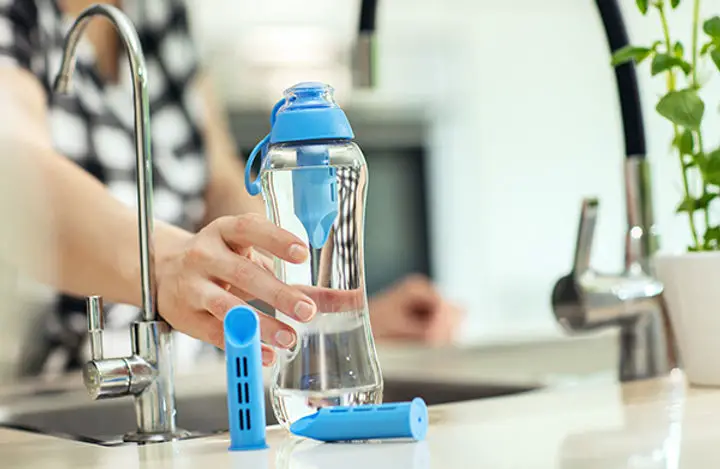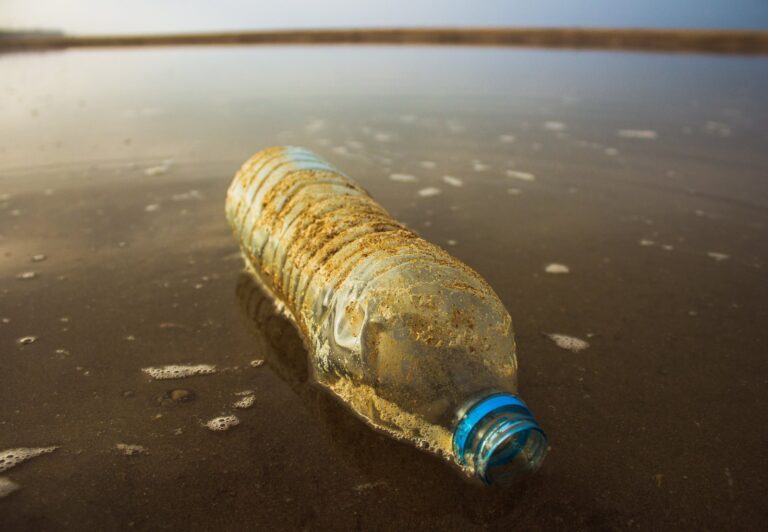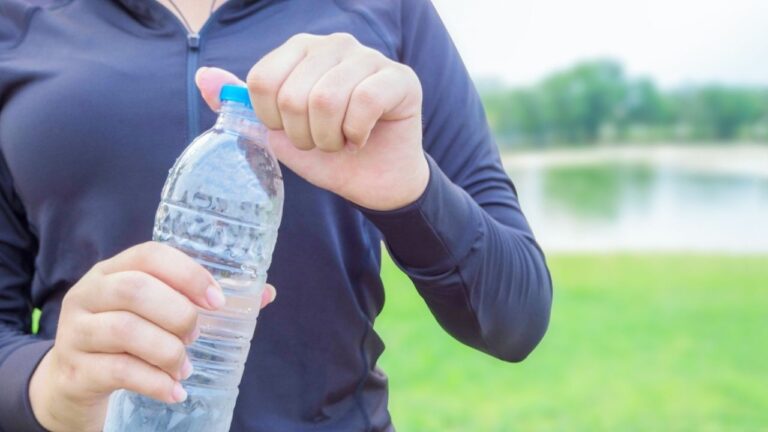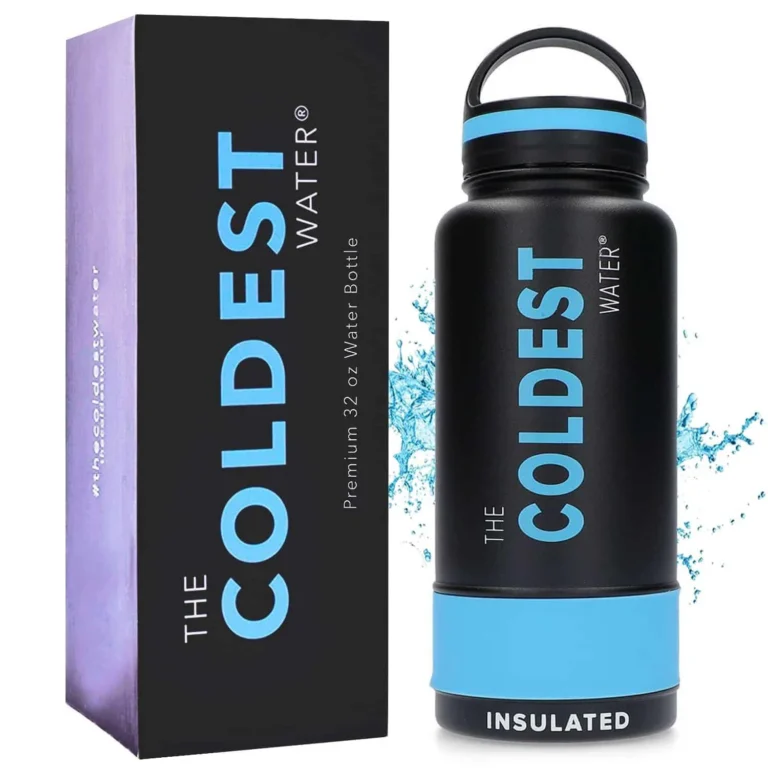Have you ever taken a gulp of water from your water bottle, only to be greeted with an unpleasant soapy taste? If you’ve experienced this, you’ll know how off-putting it can be. Not only does it ruin the taste of your refreshing drink, but it can also leave you feeling a bit queasy. Luckily, there are a few simple steps you can take to get that soapy taste out of your water bottle for good. In this blog post, we’ll dive into some effective methods that will leave your water tasting crisp and clean, just the way it should.
I. Explanation of the issue: soap taste in water bottle
Soap taste in a water bottle can be a bothersome problem that many people have experienced. It occurs when residual soap from cleaning the bottle mixes with the water, resulting in an unpleasant taste. This can be particularly frustrating for those looking to enjoy clean and refreshing water on the go. The soap taste can also affect the overall drinking experience and discourage proper hydration. Thankfully, there are several effective methods for removing the soap taste from a water bottle, ensuring that you can enjoy pure and clean-tasting water whenever you need it. By following the steps outlined below, you can say goodbye to the soap taste and hello to fresh hydration.
– Thorough rinsing with warm water
– Baking soda wash
– Vinegar soak
– Lemon juice cleanse
– Regular cleaning and use of a bottle brush
These techniques are simple and accessible, making it easy to eliminate the soap taste and maintain a fresh-tasting water bottle for optimal hydration.
Importance of removing soap taste for clean and fresh-tasting water
It is of utmost importance to remove the soap taste from your water bottle in order to enjoy clean and fresh-tasting water. Here’s why:
• Undesirable Taste: Soap residue left in the bottle can give your water an unpleasant soapy flavor, making it difficult to enjoy a refreshing drink. Removing the soap taste ensures that every sip is pure and delicious.
• Hygiene: Soap residue can provide a breeding ground for bacteria and other germs. By eliminating the soap taste, you also help maintain the hygiene of your water bottle, ensuring that you can stay hydrated without any worries.
• Freshness: Getting rid of the soap taste rejuvenates your water bottle, allowing it to serve its purpose effectively. A clean bottle not only enhances the taste of your water but also gives you the peace of mind that comes with drinking from a sanitized container.
By following the proper techniques and methods outlined in this article, you can eliminate the soap taste and keep your water bottle fresh, ensuring a delightful drinking experience every time.
II. Methods to remove soap taste from water bottles
A. Thorough rinsing with warm water
Thorough rinsing with warm water is a simple yet effective method to remove the soap taste from your water bottle. By rinsing the bottle with warm water, you can easily dislodge any soap residue and ensure a clean and fresh-tasting water. Here are the steps you can follow:
– Fill your water bottle with warm water.
– Swirl the water around vigorously inside the bottle.
– Empty the water from the bottle and repeat the process a couple of times.
– Ensure that you rinse the screw cap and lid thoroughly as well.
– Finally, rinse the bottle with cold water to remove any remaining soap taste.
This method is ideal for daily maintenance of your water bottle and can be used in combination with other cleaning techniques for a more thorough cleanse. Remember, it’s important to properly rinse your water bottle before using it to enjoy clean and refreshing water every time.
B. Baking soda wash
One effective method to remove the bothersome soap taste from your water bottle is by using a baking soda wash. Baking soda, with its mild abrasive nature and natural deodorizing properties, can help eliminate the soapy residue and freshen up the bottle. Here’s how you can go about it:
1. Create a solution by mixing baking soda with warm water.
2. Fill the water bottle with the baking soda and warm water mixture, leaving some space at the top.
3. Allow the solution to sit in the bottle for about 15 to 30 minutes, giving it time to work its magic on the soap taste.
4. After the designated time, thoroughly rinse the bottle with warm water, ensuring there is no lingering baking soda residue.
5. To make sure the bottle is completely dry, leave it to air dry before using it again.
Utilizing a baking soda wash can be a simple yet effective way to neutralize the soap taste in your water bottle, providing you with clean and refreshing-tasting water for your on-the-go hydration needs.
C. Vinegar soak
One effective method to remove soap taste from your water bottle is by using a vinegar soak. Vinegar is a natural cleaning agent that can help neutralize and eliminate odors. To do this, you can follow these steps:
1. Fill your water bottle halfway with a mixture of equal parts vinegar and water.
2. Let the solution sit in the bottle for about 15 to 30 minutes.
3. After the soaking time, rinse the bottle thoroughly with warm water to remove any remaining vinegar taste.
4. Make sure to air dry the bottle before using it again.
By using vinegar as a soak, you can effectively remove the soap taste and ensure that your water tastes fresh and clean.
D. Lemon juice cleanse
The lemon juice cleanse is another effective method to remove soap taste from your water bottle. Lemon juice is a natural disinfectant and deodorizer, making it an ideal choice for getting rid of any lingering soap residue. Here’s how you can do it:
1. Squeeze fresh lemon juice into a bowl or container.
2. Dilute the lemon juice with an equal amount of water.
3. Pour the lemon juice mixture into your water bottle, ensuring that it covers all surfaces.
4. Let the lemon juice sit in the bottle for about 15-30 minutes to allow it to work its magic.
5. After the designated time, thoroughly rinse the bottle with warm water to remove any lemon residue.
Lemon juice not only helps to eliminate the soap taste but also leaves a refreshing citrus scent behind. It’s a natural and safe alternative to chemical-based cleaners. Remember to always air dry your water bottle before using it again to ensure a clean and fresh-tasting drinking experience.
E. Regular cleaning and use of bottle brush
Regular cleaning and the use of a bottle brush is an essential step in maintaining a clean and fresh-tasting water bottle. Over time, residue from water, beverages, and even soap can build up inside the bottle, resulting in an unpleasant taste. By incorporating regular cleaning into your routine, you can ensure that your water stays refreshing and free from any undesirable flavors. Using a bottle brush allows you to reach those hard-to-clean areas, removing any remaining residue or particles. Simply rinse the bottle with warm water and then use the bottle brush to scrub the inside thoroughly. This will help to eliminate any soap taste and keep your water bottle clean and ready for use.
III. Step-by-step guide to remove soap taste from water bottle
A. Rinse thoroughly with warm water
The first step in getting rid of that pesky soap taste in your water bottle is to thoroughly rinse it with warm water. Simply rinsing your bottle may help to remove any lingering soap residue and leave your water tasting clean and fresh. Warm water is especially effective in breaking down and loosening soap particles. Take your time when rinsing, making sure to cover all surfaces of the bottle, including the cap and mouthpiece. Give the bottle a good shake to dislodge any stubborn soap remnants. By starting with a thorough warm water rinse, you’ll be on your way to enjoying delicious, soap-free hydration in no time.
B. Fill bottle with vinegar and water mixture, let it sit for 15-30 minutes, then rinse
To eliminate the stubborn soap taste in your water bottle, you can follow the simple yet effective method of filling the bottle with a vinegar and water mixture. This method works wonders in neutralizing the soapy flavor and ensuring a clean and fresh-tasting drinking experience. Here’s how to go about it:
1. Prepare a mixture of equal parts vinegar and water. For example, you can use half a cup of vinegar and half a cup of water.
2. Remove the lid or cap of your water bottle and pour the vinegar-water mixture into it.
3. Let the mixture sit in the bottle for about 15-30 minutes to allow the vinegar’s acidity to break down the soap residue.
4. After the designated time, give the bottle a good rinse with warm water to remove any remaining vinegar taste.
5. Make sure to thoroughly rinse the bottle to ensure all traces of vinegar and soap are removed.
6. Finally, let the water bottle air dry before using it again.
By following these steps, you can get rid of the soap taste and enjoy clean, fresh-tasting water every time you use your water bottle.
C. Fill bottle with water and baking soda mixture, let it sit for 15-30 minutes, then rinse
To effectively remove the soap taste from your water bottle, an easy and natural solution is to fill the bottle with a water and baking soda mixture and let it sit for 15-30 minutes. This method helps neutralize the soapy flavor and leaves your bottle fresh and clean.
Here’s a step-by-step guide to using this approach:
1. Mix a solution of warm water and baking soda in a ratio of 1 tablespoon of baking soda to 1 cup of water.
2. Fill your water bottle with the baking soda mixture, ensuring that it covers all the surfaces inside.
3. Allow the mixture to sit in the bottle for 15-30 minutes to allow the baking soda to work its magic and eliminate the soap taste.
4. After the designated time, give the bottle a good shake to dislodge any remaining residue.
5. Rinse the bottle thoroughly with warm water to remove any traces of baking soda.
6. Lastly, let the water bottle air dry before using it again to ensure it’s completely clean and ready for use.
Using the baking soda and water solution is a natural and effective way to remove soap taste from your water bottle without the use of harsh chemicals. It’s a simple method that results in fresh-tasting water every time.
D. Air dry the water bottle before using it again
After thoroughly cleaning your water bottle to remove the soap taste, it is important to ensure that it is completely dry before using it again. Air drying the bottle allows any remaining moisture to evaporate, preventing the growth of bacteria and mold. To air dry your water bottle, simply place it upside down on a clean drying rack or towel. This will allow air to circulate inside, promoting quick and efficient drying. It is important to note that wiping the bottle with a cloth may not be sufficient, as it can leave behind lint or moisture. By allowing the water bottle to air dry, you can be confident that it is ready to use for your next refreshing drink.
IV. Home remedies to remove soap taste from water bottles
A. Baking soda and warm water solution
One effective solution to remove the soap taste from a water bottle is by using a baking soda and warm water mixture. This natural remedy helps neutralize any lingering soap residue and leaves your bottle fresh and clean. To use this method, create a solution of warm water and baking soda, and then fill your water bottle with it. Let it sit for around 15-30 minutes to allow the baking soda to work its magic. Afterward, rinse the bottle thoroughly with warm water to ensure all traces of the mixture are removed. This simple yet effective technique helps eliminate any residual soap taste, leaving your water bottle ready to use again.
B. White vinegar and water solution
White vinegar is another effective solution for eliminating soap taste from your water bottle. The acetic acid in vinegar helps break down and neutralize the soap residue, leaving your bottle fresh and clean. To use this method, create a mixture of white vinegar and water, using a ratio of 1:1. Fill your water bottle with the solution and let it sit for about 15-30 minutes to allow the vinegar to work its magic. After the soaking period, thoroughly rinse the bottle with warm water to remove any remaining vinegar or soap residue. This method is safe and natural, and it can also help eliminate any unpleasant odors that may be lingering in your water bottle.
C. Lemon juice and water solution
The lemon juice and water solution is another effective method to eliminate the soap taste from your water bottle. Lemon juice not only has a refreshing aroma but also contains natural acidic properties that can help neutralize the soapy residue. Here’s how you can use this solution:
1. Squeeze the juice of one lemon into a bowl or container.
2. Add water to dilute the lemon juice.
3. Pour the lemon juice and water mixture into the water bottle.
4. Allow it to sit for 15-30 minutes to allow the lemon juice to work its magic in removing the soap taste.
5. After the designated time, rinse the bottle thoroughly with warm water to remove any remaining lemon juice or soap residue.
6. Air dry the water bottle before using it again to ensure it’s completely clean and ready for use.
Using lemon juice as a cleansing agent not only
V. Tips to identify soap taste in water bottles
A. Sniff the water for soapy odor
One way to determine if your water bottle still has a soap taste is to give it a little sniff. When you open the bottle and take a whiff, you might detect a soapy odor that indicates there is still residue present. This method allows you to quickly assess whether the soap taste has been successfully removed or if further cleaning is required. By using your sense of smell, you can make sure that your water bottle is free from any lingering soap flavors, ensuring that every sip is refreshing and enjoyable. Remember, it’s always better to be safe than sorry and take a moment to check for any unwanted aromas before filling up your water bottle.
B. Taste the water for unusual soapy flavor
When it comes to ensuring clean and fresh-tasting water from your water bottle, it’s important to be mindful of any lingering soap taste. One way to determine if your water bottle still has a soapy flavor is to taste the water. Be sure to follow these tips to maintain a natural and friendly tone:
– Take a sip of water and pay attention to any unusual soapy flavors.
– If you detect an unwanted taste, it could be a result of soap residue in the bottle.
– Consider thoroughly rinsing the bottle with warm water and examining it for any visible soap residues.
– To eliminate the soap taste, you can also try using baking soda, vinegar, or lemon juice cleanses as discussed in the previous sections.
– Remember to always air dry the bottle before using it again to prevent any lingering odors or flavors.
By taking these steps, you can enjoy clean and refreshing water from your water bottle without any unwanted soapy aftertaste.
C. Inspect the bottle for visible soap residues
Inspecting the water bottle for visible soap residues is an important step in ensuring clean and fresh-tasting water. Sometimes, even after thorough rinsing, soap residue may be left behind, resulting in an unpleasant taste. By visually examining the bottle, you can easily identify any remaining remnants. Look for any cloudy or filmy appearance on the inner surface of the bottle, as this could indicate soap residue. Additionally, check the bottle’s cap and any attachments for any potential buildup. If you notice any visible residue, it is recommended to repeat the cleaning process, focusing on the affected areas. By being diligent in inspecting the bottle for soap residues, you can ensure that your water tastes pristine and refreshing every time.
VII. Prevention of soap taste in water bottles
A. Proper rinsing before using
Proper rinsing before using the water bottle is an essential step to ensure clean and fresh-tasting water. It helps to eliminate any leftover soap residue and prevents the soap taste from contaminating your water. To properly rinse your water bottle:
– Start by thoroughly rinsing the bottle with warm water.
– Pay close attention to the inside of the bottle, ensuring that all corners and crevices are rinsed.
– Give the bottle a good shake while rinsing to dislodge any soap particles.
– Repeat the rinsing process at least two to three times to ensure all soap has been removed.
By following these simple steps, you can enjoy clean, refreshing water from your water bottle without any unpleasant soap taste.
B. Use of specialized dish soap or white vinegar for cleaning
One effective way to remove soap taste from a water bottle is to consider using specialized dish soap or white vinegar for cleaning. These options are great for tackling the residue left behind by soap, ensuring a fresh and clean taste in your water. Specialized dish soaps are designed to cut through grease and grime effectively, leaving no trace of soap taste behind. On the other hand, white vinegar is known for its natural cleaning properties and ability to break down soap residue. By using a mixture of white vinegar and water or a small amount of specialized dish soap and warm water, you can effectively clean your water bottle and eliminate any leftover soapy flavor. Remember, always rinse thoroughly before using the bottle again to ensure the complete removal of any cleaning agents.
C. Avoiding harsh chemicals and abrasive scrubbers
Avoiding harsh chemicals and abrasive scrubbers is essential for maintaining the longevity and integrity of your water bottle. These substances can cause damage to the bottle’s material, affecting its overall quality. Instead, opt for natural and gentle cleaning methods. Consider using a soft bottle brush or a cloth to wipe the interior of the bottle, ensuring a thorough clean without causing any scratches. Additionally, you can use specialized dish soap or white vinegar, both of which are effective in removing soap taste and residue. By using these safer alternatives, you can keep your water bottle in great condition, ensuring that it remains a trusted companion for your hydration needs




